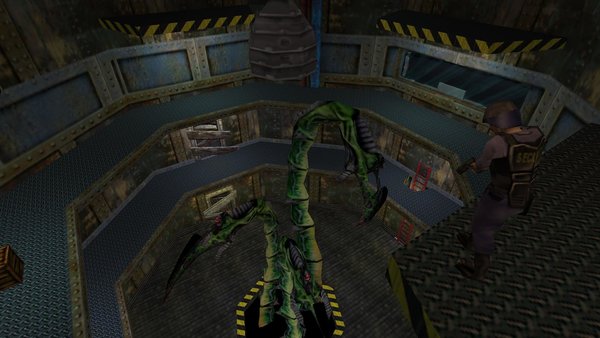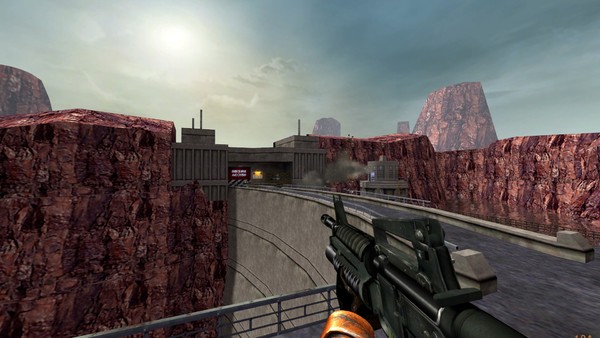How Half-Life Broke First-Person Gaming Shooters Forever
A Masterclass In Pacing

Half-Life successfully maintains a action-packed and visceral thrill-ride across its extended run-time, with each chapter blending into the next with little distractions.
The scenarios on offer here are simply fantastic; in the early portions of the facility, you'll activate a rocket to kill off a massive tentacled monster and start encountering a contingent of US Marines sent to cover up the catastrophe. The latter in particular are often a challenge to fight, as their artificial intelligence was very smart for the time. Flanking the player and flushing them out with grenades made these troopers far more aggressive and engaging to fight.
Unlike competitors such as Red Faction, every single one of Half-Life's pace-altering moments are wholly engaging in some form. There's no tacked on stealth sections that fail to leverage the game's systems. Instead, things are constantly switched up with new challenges. The showdown with the Icthyosaur's in a shark cage a-la Jaws is heavily claustrophobic, while later on the more experimental weapons Gordon uses in "Questionable Ethics" deliver a great sense of empowerment.
Many early FPS titles made use of similar layouts and level designs to ensure the player wouldn't get lost; Half-Life begged to differ by delivering an incredibly diverse setting for players to shoot through.

Everything culminates in Surface Tension; once Freeman finally gets out into the open, the game turns into a warzone. The US forces and aliens from Xen clash in an intense battle and it's up to you the player to navigate their way through, downing helicopters and military vehicles while avoiding the sidelines of snipers, mines and intruding enemies.
Everything you've learned regarding the weapons and environments comes together here alongside the greatest stakes. You feel like a one-man-army in this devastated environment and it's an excellent setup to the title's final chapters.